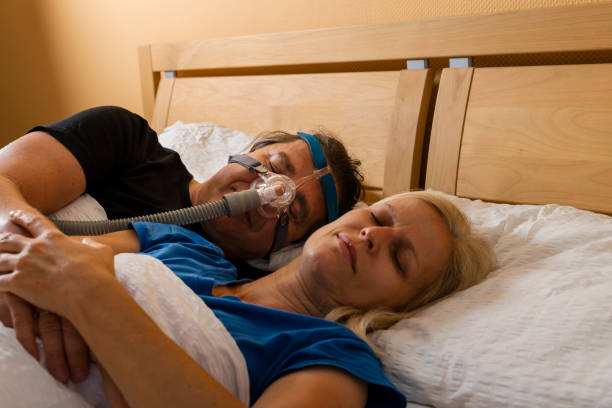
The Future of Sleep Apnea Treatment: Embracing Technology and Collaboration
In the rapidly evolving landscape of healthcare, the management of sleep apnea stands at the forefront of significant change. Innovations in technology and a growing emphasis on interdisciplinary collaboration are reshaping how we approach this prevalent condition. As a part of our ongoing commitment to advancing sleep apnea care, this blog explores the transformative potential of these developments and how they promise to enhance patient outcomes and streamline treatment processes.
Technological Innovations in Sleep Apnea Management
The integration of technology into sleep apnea diagnosis and treatment has opened new avenues for patient care, marked by increased accessibility, precision, and personalization.
Wearable Technology: Devices like the Circul Ring and WatchPAT are revolutionizing sleep studies by enabling accurate at-home monitoring. These wearables track vital sleep metrics, offering a comfortable and convenient alternative to traditional polysomnography in sleep labs.
Telemedicine: The rise of telemedicine has made sleep apnea care more accessible than ever. Virtual consultations and follow-ups allow for timely intervention, ongoing support, and improved compliance with treatment plans, regardless of geographical constraints.
Customized Oral Appliances: Advancements in dental technology facilitate the creation of personalized mandibular advancement devices. Using digital impressions and 3D printing, these appliances are tailored to the individual’s anatomy, enhancing comfort and efficacy.
CPAP Innovation: Continuous positive airway pressure (CPAP) devices have seen significant improvements in design, functionality, and user-friendliness. Modern CPAP machines are quieter, more portable, and equipped with features like humidification and wireless data tracking, improving patient adherence and satisfaction.


The Power of Interdisciplinary Collaboration
The complex nature of sleep apnea necessitates a comprehensive approach to treatment, involving experts from various fields. The collaboration between dentists, physicians, sleep technologists, and other healthcare professionals is crucial for delivering holistic care.
Shared Knowledge and Resources: Interdisciplinary teams bring together diverse expertise, allowing for a more thorough understanding of sleep apnea and its comorbidities. This collective knowledge leads to more accurate diagnoses and comprehensive treatment strategies.
Coordinated Care Plans: Collaboration ensures that all aspects of a patient’s care are aligned, from lifestyle interventions and oral appliance therapy to CPAP use and surgical options. This coordination enhances the effectiveness of treatment and patient adherence.
Continuing Education and Training: Cross-disciplinary education initiatives help healthcare providers stay informed about the latest in sleep medicine, fostering a culture of continuous learning and innovation.
Looking Ahead: The Future of Sleep Apnea Care
As we look to the future, the integration of technology and collaboration in sleep apnea management holds great promise. Artificial intelligence (AI) and machine learning (ML) are poised to play a significant role, with the potential to analyze vast amounts of data for personalized treatment insights and predictive analytics. Moreover, the continued development of minimally invasive treatment options and patient-centric care models will further democratize access to effective sleep apnea therapies, ensuring that more individuals can lead healthier, more restful lives. In conclusion, the future of sleep apnea treatment is bright, marked by technological advancements and a commitment to interdisciplinary care. At the heart of these developments is the goal to enhance patient outcomes, streamline treatment processes, and improve the quality of life for those affected by sleep apnea. As we embrace these changes, the potential to transform sleep medicine and make a lasting impact on public health is immense.

